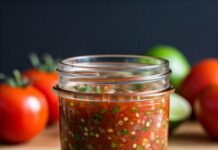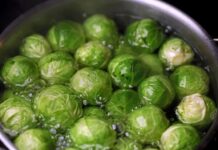Freezing pureed vegetables is an excellent way to prepare nutritious, homemade baby food in advance. This method preserves the nutrients and flavors, allowing you to provide healthy meals for your baby quickly and easily. Here’s a step-by-step guide to freezing pureed vegetables:
Step 1: Choose Fresh Vegetables
- Pick the Best: Select fresh, ripe, and high-quality vegetables without blemishes or signs of spoilage.
- Popular Options: Sweet potatoes, carrots, peas, green beans, zucchini, and pumpkin are great choices for baby food.
Step 2: Wash and Prepare Vegetables
- Rinse Thoroughly: Wash the vegetables under cold running water to remove dirt and pesticides.
- Peel and Chop: Peel the vegetables if necessary and cut them into small, even pieces for uniform cooking.
Step 3: Cook the Vegetables
Cooking makes vegetables soft and easier to puree, while also making them easier for babies to digest.
- Steam or Boil: Cook vegetables until they are tender enough to be mashed easily with a fork.
- Roast (Optional): For a richer flavor, roast vegetables like sweet potatoes or squash.
- Cool Completely: Let the cooked vegetables cool before pureeing.
Step 4: Puree the Vegetables
- Blend Smoothly: Use a blender, food processor, or hand blender to puree the vegetables until smooth.
- Add Liquid if Needed: If the puree is too thick, add a little water, breast milk, or formula to achieve the desired consistency.
Step 5: Portion and Freeze
- Use Ice Cube Trays: Spoon the pureed vegetables into clean, BPA-free ice cube trays. Each compartment typically holds about 1 ounce, making it easy to portion servings.
- Cover and Freeze: Cover the trays tightly with plastic wrap or a lid to prevent freezer burn. Freeze until solid, usually 4-6 hours.
Step 6: Transfer to Freezer Bags
- Pop Out the Cubes: Once frozen, remove the cubes from the trays and transfer them to labeled freezer-safe bags or containers.
- Label: Write the date and type of vegetable on each bag or container.
- Storage Time: Frozen pureed vegetables can be stored for up to 3 months.
How to Use Frozen Pureed Vegetables
- Thaw Safely:
- Transfer the desired amount of cubes to the refrigerator to thaw overnight.
- Alternatively, warm the cubes gently in a small pot over low heat or in a microwave-safe dish.
- Mix and Match: Combine different vegetable purees or mix them with grains, proteins, or fruits for variety.
- Test the Temperature: Always check the temperature before serving to your baby.
Pro Tips for Freezing Baby Food
- Freeze Small Portions: Babies eat small amounts, so freezing in smaller portions reduces waste.
- Avoid Seasoning: Do not add salt, sugar, or strong spices to baby food.
- Test for Allergies: Introduce one new vegetable at a time to watch for any allergic reactions.
- Avoid Refreezing: Do not refreeze thawed baby food to maintain safety and quality.
FAQs About Freezing Baby Food
Can I freeze all vegetables for baby food?
Most vegetables freeze well. However, avoid high-water-content vegetables like cucumbers or lettuce, as they become watery when thawed.
Does freezing affect the nutrients in baby food?
Freezing preserves most of the nutrients, though some loss may occur during cooking.
Can I freeze vegetable purees with breast milk or formula?
Yes, but ensure the breast milk or formula used was fresh and not previously frozen.










